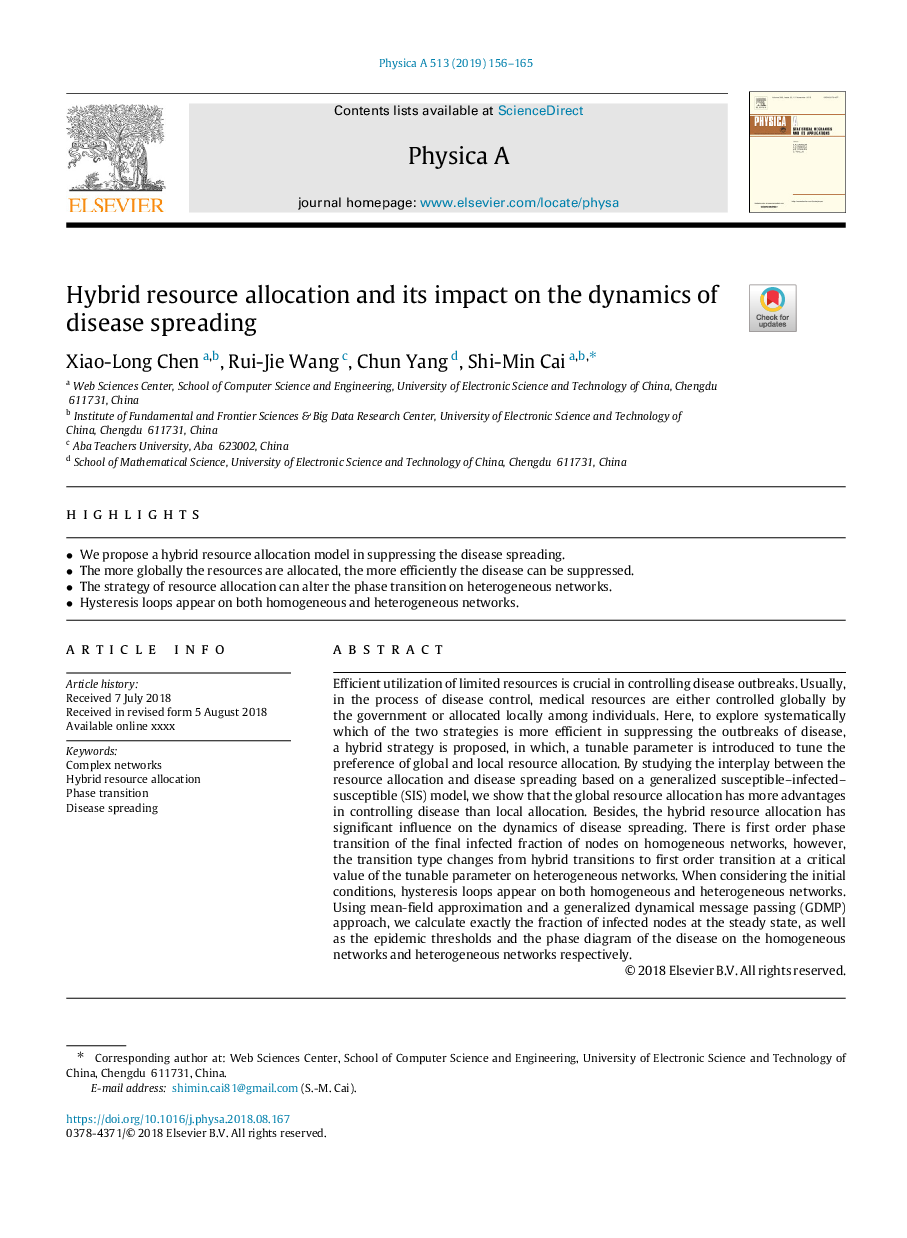| Article ID | Journal | Published Year | Pages | File Type |
|---|---|---|---|---|
| 10140564 | Physica A: Statistical Mechanics and its Applications | 2019 | 10 Pages |
Abstract
Efficient utilization of limited resources is crucial in controlling disease outbreaks. Usually, in the process of disease control, medical resources are either controlled globally by the government or allocated locally among individuals. Here, to explore systematically which of the two strategies is more efficient in suppressing the outbreaks of disease, a hybrid strategy is proposed, in which, a tunable parameter is introduced to tune the preference of global and local resource allocation. By studying the interplay between the resource allocation and disease spreading based on a generalized susceptible-infected-susceptible (SIS) model, we show that the global resource allocation has more advantages in controlling disease than local allocation. Besides, the hybrid resource allocation has significant influence on the dynamics of disease spreading. There is first order phase transition of the final infected fraction of nodes on homogeneous networks, however, the transition type changes from hybrid transitions to first order transition at a critical value of the tunable parameter on heterogeneous networks. When considering the initial conditions, hysteresis loops appear on both homogeneous and heterogeneous networks. Using mean-field approximation and a generalized dynamical message passing (GDMP) approach, we calculate exactly the fraction of infected nodes at the steady state, as well as the epidemic thresholds and the phase diagram of the disease on the homogeneous networks and heterogeneous networks respectively.
Related Topics
Physical Sciences and Engineering
Mathematics
Mathematical Physics
Authors
Xiao-Long Chen, Rui-Jie Wang, Chun Yang, Shi-Min Cai,
